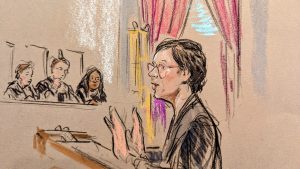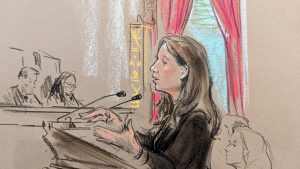ARGUMENT ANALYSIS
Justices weigh rules for when public officials can block critics on social media

on Oct 31, 2023 at 5:40 pm
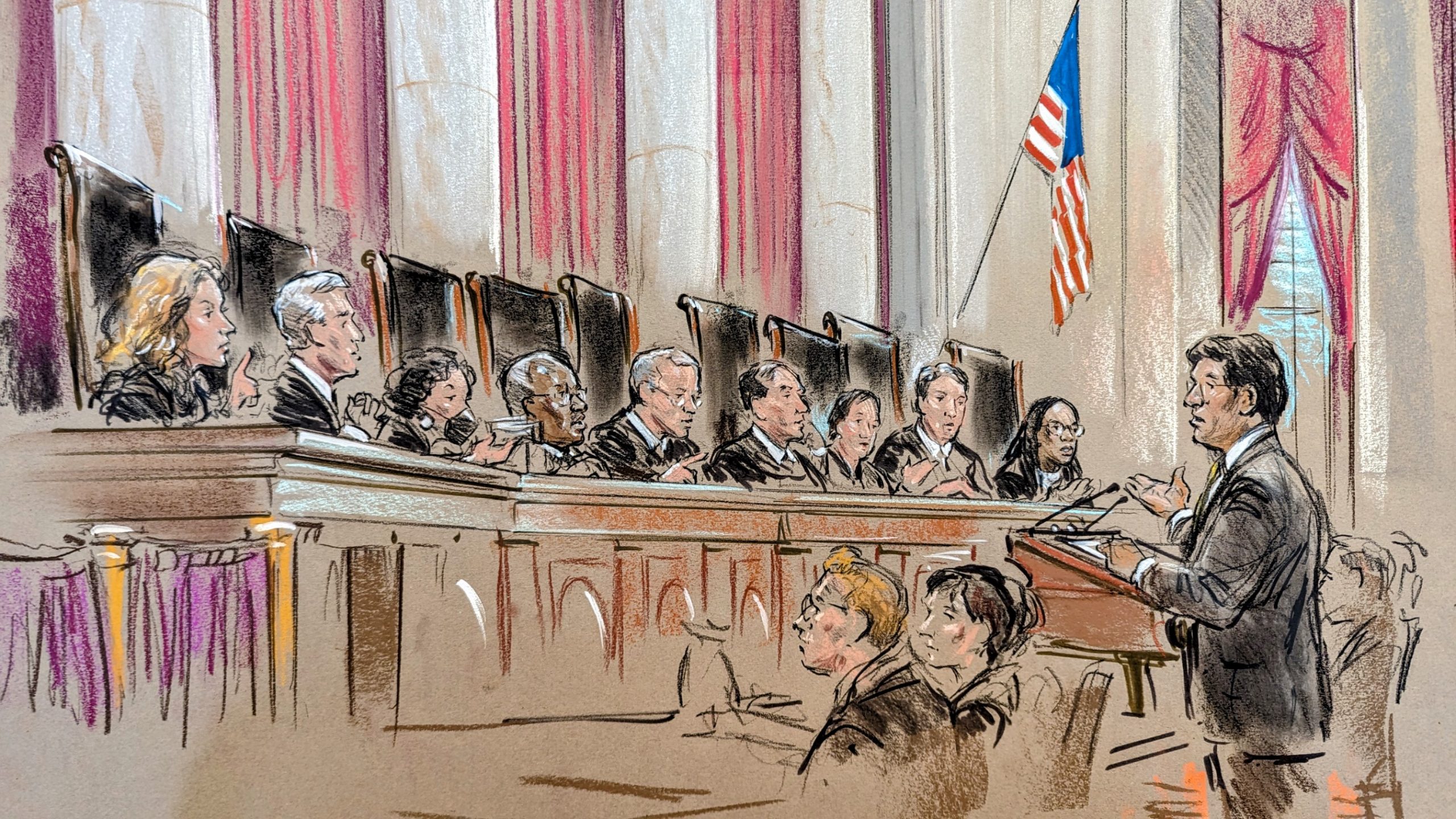
The Supreme Court on Tuesday struggled to define precisely when public officials who block their critics on their personal social media accounts are acting on behalf of the government and therefore can be held liable for violating the First Amendment. As Justice Neil Gorsuch put it, the justices had a “profusion of possible tests” before them, but it was not clear after over three hours of arguments which one they would choose.
The justices heard arguments in two cases arising from efforts of local government officials to block constituents who criticized them. In O’Connor-Ratcliff v. Garnier, the U.S. Court of Appeals for the 9th Circuit held that two members of a southern California school board violated the First Amendment when they blocked two parents who repeatedly posted lengthy criticisms on social media pages that the school board members had created for their campaigns. But in Lindke v. Freed, the U.S. Court of Appeals for the 6th Circuit ruled that the manager of Port Huron, Michigan, did not act on behalf of the government when he blocked a city resident who had criticized him.
Representing Michelle O’Connor-Ratcliff and T.J. Zane, the school board members, lawyer Hashim Mooppan emphasized that public officials “are still private citizens too.” “The only principled and workable test,” Mooppan argued, to determine whether public officials like O’Connor-Ratcliff and Zane acted in their official capacity “is to ask whether they exercised any duties or authorities of their job.”
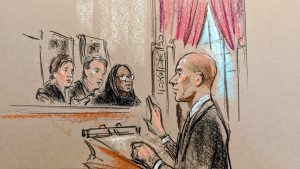
Assistant to the Solicitor General Sopan Joshi argues for the federal government. (William Hennessy)
Justice Elena Kagan pressed Mooppan about the broader implications of his rule – and, in particular, whether it would mean that former President Donald Trump could not be held liable for violating the First Amendment when he blocked his critics on X, formerly known as Twitter. This was not a hypothetical question: In 2021, the Supreme Court threw out a lower-court ruling against the former president in a lawsuit brought by several people whom he had blocked.
Mooppan suggested that if Trump were writing and posting his tweets by himself, without help from government employees, then he would be exercising his First Amendment rights “to talk about the government in his individual capacity.”
Kagan pushed back, noting that Trump appeared to be “doing … a lot of government on his Twitter account,” including sometimes “announcing policies.” Trump’s Twitter account, Kagan said, “was an important part of how he wielded his authority. And to cut a citizen off from that is to cut a citizen off from part of the way that government works.”
Kagan also resisted Mooppan’s emphasis on the First Amendment rights of public officials, noting that “there are First Amendment interests on both sides” in this dispute: protecting the rights of those officials but also “enabling citizens to access” their government. “That’s what makes this case hard,” she concluded.
Representing parents Christopher and Kimberly Garnier, Pamela Karlan offered a different test: Because O’Connor-Ratcliff and Zane were doing their jobs when they blocked the Garniers, their conduct is presumed to be state action.
Justice Samuel Alito expressed concern that Karlan’s rule would sweep in too much conduct. Elected officials, he said, “have told me they’re always on call. They’re always doing their job. They’re always being approached by constituents.”
Justice Amy Coney Barrett asked Karlan whether her clients could prevail even under the “duties and authorities” test advanced by Mooppan.
Karlan agreed that they would, because (among other things) O’Connor-Ratcliff and Zane had a duty under California law and the board’s bylaws to keep the public informed about their work on the school board. But she suggested that the “duties and authorities” test on which the 6th Circuit relied to rule for Freed was too narrow – for example, because courts should interpret the term “duty” more broadly to include not only state law but also history and tradition, bylaws, handbooks, and well-established customs.
Alito again worried aloud that Karlan’s definition was too capacious. It’s a “well-established custom,” he observed, “for any elected public official to inform constituents about what he or she is doing.” Would that mean, he asked, that elected officials act on behalf of the government whenever they tell constituents what they have been doing?
Kagan later noted that the 9th Circuit’s focus on the function of a public official’s social media account was similar to Karlan’s focus on duty. She asked, “They’re kind of all tied up together?”
Karlan agreed, telling Kagan that “[w]hen you’re doing your job, you’re doing the function of being a Trustee of the Poway School District.”
Barrett then picked up the thread, observing that Karlan’s response brought the court back to whether “this is all a question of how broadly do we define authority or duty” – a question that could prove to be the key inquiry in the case.
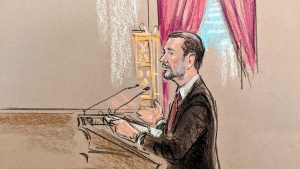
Allon Kedem argues for Kevin Lindke. (William Hennessy)
Representing Kevin Lindke, the Port Huron resident who was blocked after he complained on social media about the city’s handling of the COVID-19 pandemic, lawyer Allon Kedem told the justices that “a public official who creates a channel for communicating with constituents about conduct in office and then blocks a user from that channel must abide by the Constitution.”
Kedem fielded questions from Justice Clarence Thomas about the facts of his case. Thomas noted that the school board members in the first case had only three personal posts on their Facebook pages, implying that the Facebook page for city manager James Freed had significantly more personal content and therefore was more likely to be a personal page.
Kedem countered that the ratio of personal to job-related posts on Freed’s page changed once the COVID-19 pandemic began in 2020.
Justice Brett Kavanaugh was dubious about Kedem’s proposed focus on whether an official has established a channel for communicating with constituents. Particularly in the real world, Kavanaugh told Kedem, public officials want to be able to meet with members of the community to get input and feedback, but they often want to rely “on groups of people who are supporters, friends, people they’ve known, people that are fair-minded, not people that are just going to come and scream at them.”
Although the justices struggled to settle on a test, several justices were clearly skeptical of the test proffered by the federal government, which filed briefs as a “friend of the court” supporting the public officials in both cases. The government contended that in cases like these, involving the denial of access to property, the critical question in determining whether a public official acts in a personal capacity or instead in a government capacity in excluding someone from the property will hinge primarily on whether the property is owned by the government or instead is private property.
Alito told Masha Hansford, the assistant to the U.S. solicitor general who argued on behalf of the federal government in Lindke, that in a brick-and-mortar world it would be difficult to move events to private property. It is therefore “quite artificial,” Alito posited, to have the state-action inquiry depend so heavily on ownership of a Facebook page.
Chief Justice John Roberts echoed Alito’s thoughts, expressing “surprise” at “all the emphasis on private property.” “In what sense,” Roberts queried, is a Facebook page “really private property? It’s just the gathering of the protons or whatever they are,” Roberts observed.
Kagan dismissed the government’s test as “archaic.” She observed that “more and more of our government operates on social media. More and more of our democracy operates on social media.” And as a result, she suggested, the government’s proposed rule doesn’t really account for “how much is going to be happening in this forum and how much citizens will be foreclosed from participating in our democracy if the kind of rule you’re advocating goes into effect.”
Toward the end of the second argument, Thomas posed a question that he acknowledged “is probably not relevant in this case.” “[L]ooming in the background,” he said, “is the power of Facebook itself to block these accounts. Is there any role for consideration of the fact that Facebook could also influence who’s blocked and who’s not blocked?”
Hansford emphasized that, in the cases before the court on Tuesday, Facebook had not “purported to exercise that control.” But Thomas’s question was a reminder that Tuesday’s arguments were only the first of several cases before the court this term involving government and social media. The justices will hear argument sometime early next year in a pair of challenges to controversial laws in Florida and Texas that seek to regulate social media companies, as well as a dispute alleging that the federal government violated the First Amendment by pressuring social media companies to remove false or misleading content about (among other things) the 2020 election and COVID-19.



